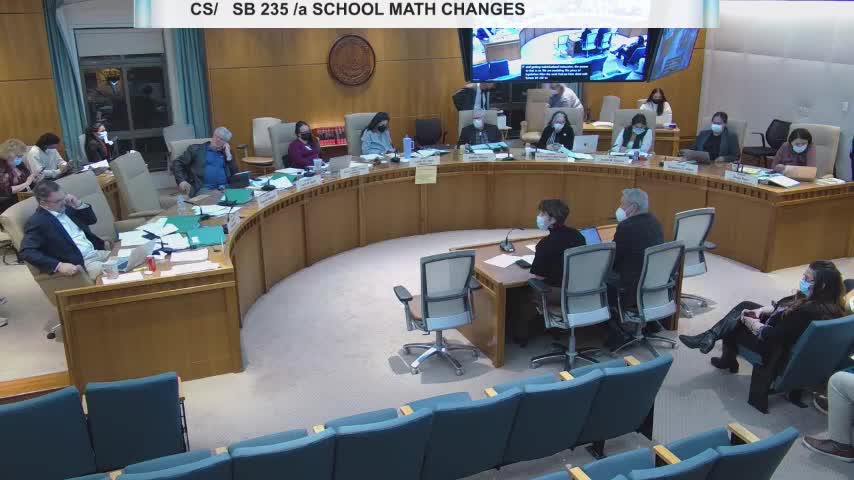Senate Committee Evaluates Education Bill Amid Union Support and Data Disaggregation Concerns
March 02, 2025 | Health and Public Affairs, Senate, Committees, Legislative, New Mexico
This article was created by AI summarizing key points discussed. AI makes mistakes, so for full details and context, please refer to the video of the full meeting. Please report any errors so we can fix them. Report an error »

In a recent meeting of the New Mexico Senate's Health and Public Affairs Committee, lawmakers engaged in a spirited discussion about a proposed education bill aimed at improving student performance across the state. The atmosphere was charged with a mix of hope and skepticism as senators weighed the potential impact of the legislation.
One senator expressed cautious support for the bill, emphasizing the importance of setting clear goals for educational outcomes. "I hope it's 4%," he remarked, suggesting that measurable targets would help track progress and justify the program's continuation. He urged for transparency in data collection, indicating that understanding why goals are met or missed is crucial for future policy decisions.
The conversation turned to the bill's backing from educational unions, with assurances that while no formal endorsement letter was available, the unions had not opposed the initiative. This sentiment echoed a broader concern among educators regarding the current state of student performance, with many acknowledging the need for professional development to enhance educational quality.
Questions arose about the involvement of specific stakeholder groups, particularly those representing Hispanic and Indigenous communities. While it was noted that the Indian Education Department had participated in stakeholder meetings, the absence of direct endorsements from the Hispanic Education Act commission raised eyebrows. Senators highlighted the necessity of disaggregating data to better understand the performance of various student demographics, arguing that a nuanced approach is essential for addressing educational disparities.
As the meeting concluded, the senators left with a sense of urgency to ensure that all students, regardless of background, receive the support they need to succeed. The discussions underscored a collective commitment to improving educational outcomes in New Mexico, setting the stage for future debates on how best to achieve these goals.
One senator expressed cautious support for the bill, emphasizing the importance of setting clear goals for educational outcomes. "I hope it's 4%," he remarked, suggesting that measurable targets would help track progress and justify the program's continuation. He urged for transparency in data collection, indicating that understanding why goals are met or missed is crucial for future policy decisions.
The conversation turned to the bill's backing from educational unions, with assurances that while no formal endorsement letter was available, the unions had not opposed the initiative. This sentiment echoed a broader concern among educators regarding the current state of student performance, with many acknowledging the need for professional development to enhance educational quality.
Questions arose about the involvement of specific stakeholder groups, particularly those representing Hispanic and Indigenous communities. While it was noted that the Indian Education Department had participated in stakeholder meetings, the absence of direct endorsements from the Hispanic Education Act commission raised eyebrows. Senators highlighted the necessity of disaggregating data to better understand the performance of various student demographics, arguing that a nuanced approach is essential for addressing educational disparities.
As the meeting concluded, the senators left with a sense of urgency to ensure that all students, regardless of background, receive the support they need to succeed. The discussions underscored a collective commitment to improving educational outcomes in New Mexico, setting the stage for future debates on how best to achieve these goals.
View full meeting
This article is based on a recent meeting—watch the full video and explore the complete transcript for deeper insights into the discussion.
View full meeting
